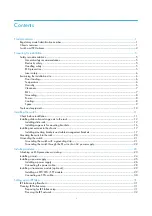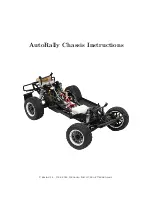
Service Modes, Error Codes, and Fault Finding
5.
5.
Service Modes, Error Codes, and Fault Finding
Index of this chapter:
5.1 Test Points
5.2 Service Modes
5.3 Problems and Solving Tips (Related To CSM)
5.4 ComPair
5.5 Error Buffer
5.6 The Blinking LED Procedure
5.7 Protections
5.8 Repair Tips
5.1
Test Points
The chassis is equipped with test points printed on the circuit
board assemblies. These test points refer to the functional
blocks:
Figure 5-1
The numbering is in a logical sequence for diagnostics. Always
start diagnosing within a functional block in the sequence of the
relevant test points for that block.
Perform measurements under the following conditions:
•
Service Default Mode.
•
Video: colour bar signal.
•
Audio: 3 kHz left, 1 kHz right.
5.2
Service Modes
Service Default Mode (SDM) and Service Alignment Mode
(SAM) offer several features for the service technician, while
the Customer Service Menu (CSM) is used for communication
between dealer and customer.
There is also the option of using ComPair, a hardware interface
between a computer (see requirements) and the TV chassis. It
offers the ability of structured trouble shooting, error code
reading and software version readout for all L01 chassis.
Minimum requirements
: a 486 processor, Windows 3.1 and a
CD-ROM drive. A Pentium Processor and Windows 95/98 are
also acceptable (see also paragraph 5.4).
Figure 5-2
5.2.1
Service Default Mode (SDM)
Purpose
•
To create a predefined setting to get the same
measurement results as given in this manual.
•
To override SW protections.
•
To start the blinking LED procedure.
Specifications
•
Tuning frequency:
–
475.25 MHz for PAL/SECAM (Europe and AP-PAL).
–
61.25 MHz (channel 3) for NTSC-sets (AP-NTSC).
•
Colour system:
–
SECAM L for France.
–
NTSC for NAFTA and AP-NTSC.
–
PAL-BG for Europe and AP-PAL.
•
All picture settings at 50 % (brightness, colour contrast,
hue).
•
Bass, treble and balance at 50 %; volume at 25 %.
•
All service-unfriendly modes (if present) are disabled, like:
–
(sleep) timer,
–
child/parental lock,
–
blue mute,
–
hotel/hospitality mode
–
auto switch-off (when no ‘IDENT’ video signal is
received for 15 minutes),
–
skip/blank of non-favourite pre-sets/channels,
–
auto store of personal pre-sets,
–
auto user menu time-out.
How to enter SDM
Use one of the following methods:
•
Use a standard customer RC-transmitter and key in the
code ‘062596’ directly followed by the MENU button or
•
Short wires 9631 and 9641 on the mono carrier (see Fig. 8-
1) and apply Mains voltage. Then press the power button
(remove the short after start-up).
Caution:
Entering SDM
by shorten wires 9631 and 9641 will override the +8V-
protection. Do this only for a short period. When doing this,
the service-technician must know exactly what he is doing,
as it could lead to damaging the set.
•
Or via ComPair.
After entering SDM, the following screen is visible, with SDM at
the upper right side for recognition.
TEST POINT OVERVIEW L01
Test point
Circuit
Diagram
A1-A2-A3-…..
Audio processing
A8, A9 / A11
C1-C2-C3-…..
Control
A7
F1-F2-F3-…..
Frame drive
A3
I1-I2-I3-…..
Tuner & IF
A4
L1-L2-L3-….
Line drive
A2
P1-P2-P3-…..
Power supply
A1
S1-S2-S3-…..
Synchronisation
A6
V1-V2-V3-…..
Video processing
A5, B1
CL 16532008_044.eps
210501
!"
"#
$%
!"
$"#
$%
!"
&
'
"#
$%
!"
&
'
$"#
$%
!"
!"# !$%#%&'&$(#!!$&#)&'&
CL 16532008_0
5
7
2
2
0501




























